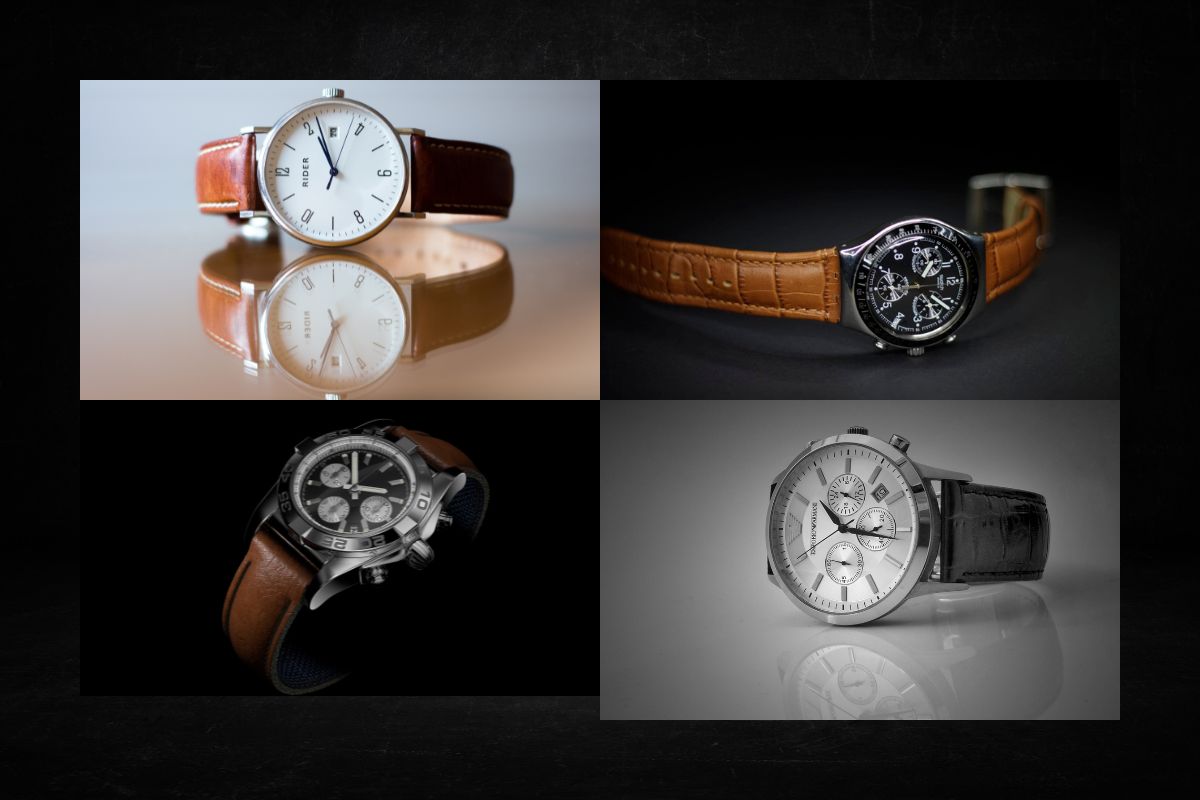
7 Powerful Ways Photo Retouching Enhances Watch Photography
Ansu Man | Dec. 30, 2024 | Categories: Retouching | 0 comments
Discover industry-level techniques that elevate your watch imagery from good to premium. Watch photography is a unique beast—precision-crafted subjects captured under intense scrutiny.
Whether you're shooting for luxury catalogues or high-conversion product pages, capturing the image is just step one. Retouching is where your watch photos truly come to life.
In this post, we explore seven advanced, watch-specific retouching enhancements used by professionals, including recent innovations in AI, mobile workflows, and creative storytelling. This is not your typical skin-smoothing tutorial — this is precision editing for a precision product.
1. Flawless Dust and Fingerprint Removal
Watches are magnetically attractive—to dust, lint, and fingerprints. High-resolution macro lenses make even microscopic particles appear massive. Professional retouching involves selective cloning, advanced healing brushes, and frequency separation to eliminate imperfections without altering surface textures.
2. Glass Reflection Management
Even with perfect lighting, crystal reflections can ruin clarity. Through careful masking, luminosity blending, and multi-exposure compositing, editors can retain the original integrity of the glass while eliminating distracting reflections and ghosting artifacts.
3. Color & Metal Accuracy
Retouchers use calibrated monitors, LAB color corrections, and selective hue adjustments to reproduce true-to-brand colors—particularly important for gold, stainless steel, and ceramic components. AI-powered color matching tools are also emerging to aid consistency across campaigns.
4. Enhancing Dial Texture and Depth
The intricacies of guilloché patterns, skeleton movements, or chronograph engravings often require micro-contrast enhancement. Tools like high-pass overlays, dodge-and-burn layers, and smart texture filters can bring hidden depth to dial artistry.
5. Luminosity Balance Across the Case
Uneven lighting on lugs, bezels, or crown edges can lead to visual imbalance. Retouchers use gradient maps, curves, and channel mixing to equalize highlight and shadow transitions, creating symmetry that lighting setups alone can’t achieve.
6. Precision in Alignment and Symmetry
A slight tilt in the watch face or strap can throw off the visual appeal. Retouching software enables precise rotation, grid-based alignment, and frame corrections to ensure perfect horizontals and verticals—crucial for editorial layouts and online store uniformity.
7. Creative Stylization and Branding
Watch photography isn’t just documentation—it’s storytelling. Using selective color grading, bokeh overlays, or branded LUTs, retouchers create consistent visual identities that align with luxury aesthetics, adventure themes, or minimalist design philosophies. This helps brands own a style that resonates across all marketing channels.
Bonus: AI Retouching vs Manual Precision
Modern AI tools like generative fill, smart masking, and auto-heal are game-changers for batch editing and background replacement. But for luxury-level detail—especially in textures and metal fidelity—manual retouching remains irreplaceable. Smart professionals are now blending both to achieve speed and precision.
Conclusion: Watch photography demands the same precision in post-production as it does in design. By mastering these advanced retouching techniques, you ensure your timepiece images don't just tick—they shine. Whether you're a studio, e-commerce brand, or independent seller, polished visuals make all the difference.